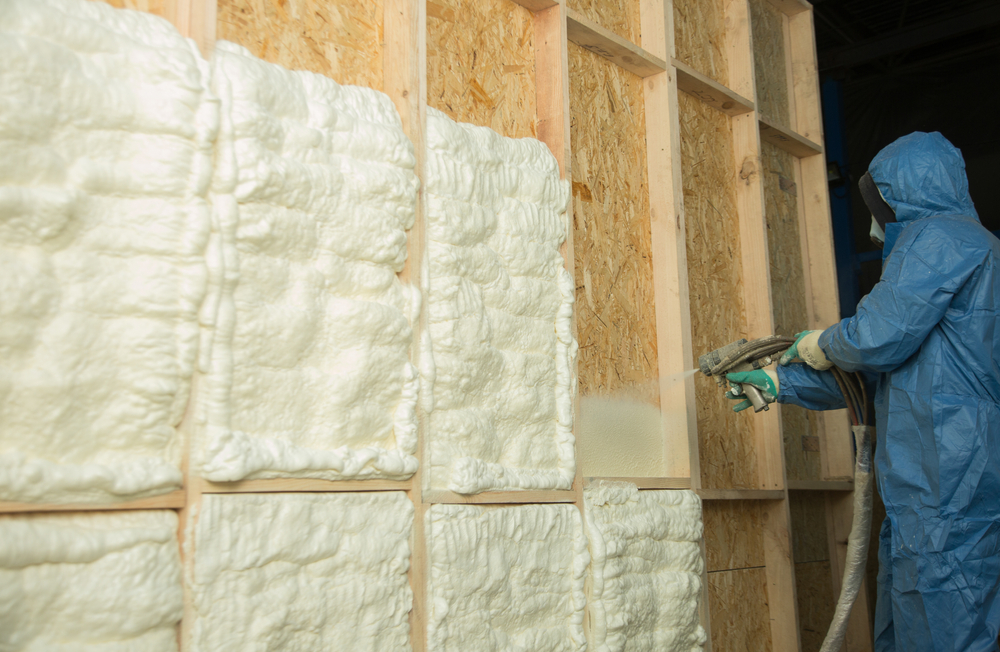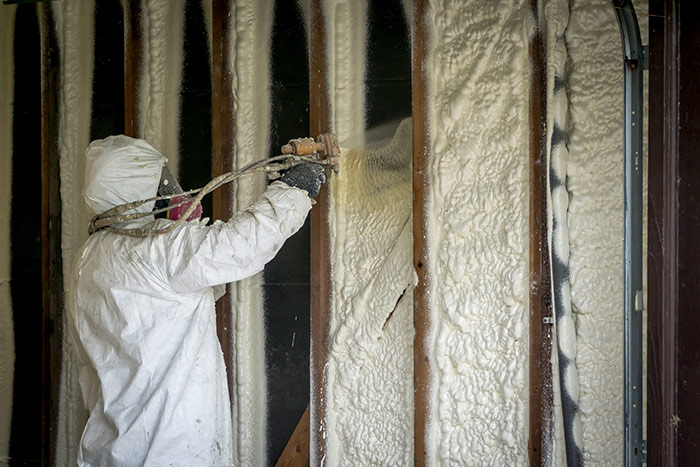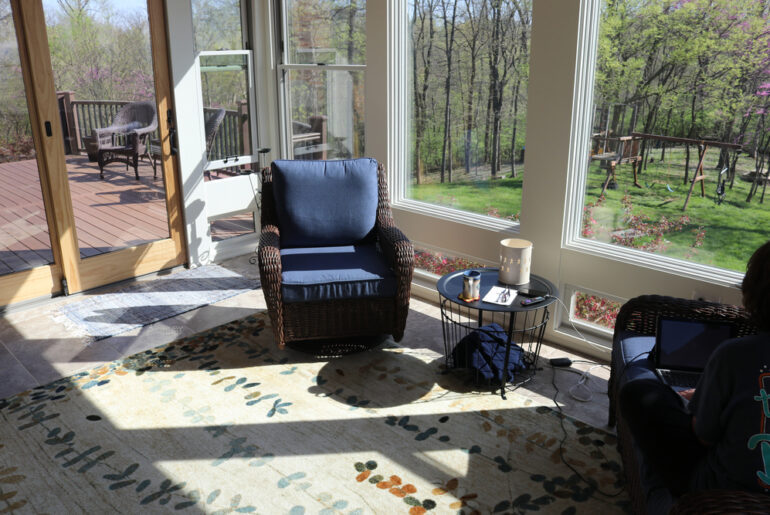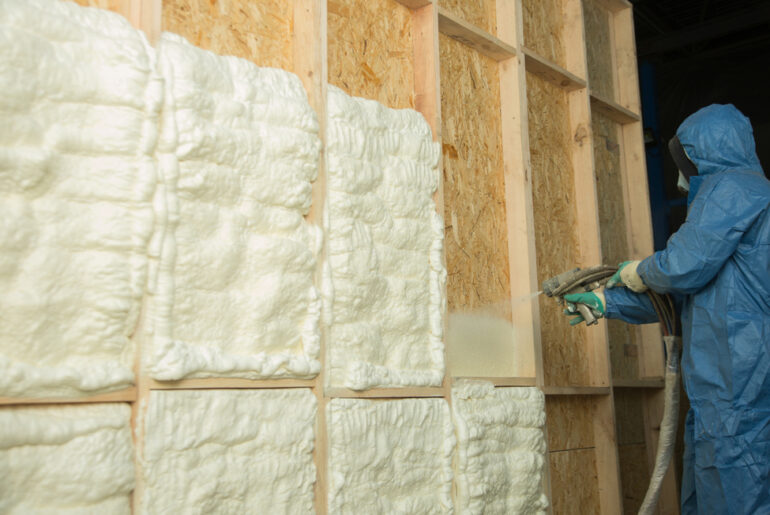Spray foam insulation is a top choice for renovators and new house builders for many reasons, and it comes out ahead of other insulation products in a number of ways.
Spray foam was developed in the 1930s by chemist Otto Bayer for use by the early aviation industry and gradually began to be used in commercial and residential construction from the 1960s. Today spray foam insulation is continuing to be developed.
The benefits of spray foam insulation, from its high R value to simple installation, keep it at the forefront of today’s energy-saving technology, which can make it an unbeatable contender for any new build or renovation project.
Here are our top 9 reasons why spray foam insulation should be your choice.
1. Closed Cell Spray Foam Insulation Has The Highest R-Value
Closed cell spray foam has the highest R-value of any insulation product on the market, and for this reason it should win hands down in any comparison test. R-value is a term used to measure the heat flow through a material and is a standard indicator of thermal efficiency for insulation products.
The R-value of closed cell spray foam is 7 per inch, which is twice that of loose fill cellulose (3.1-3.8) and fiberglass batts (2.9-3.8). When there is restricted space in your wall cavities, closed cell spray foam’s superior insulating properties will deliver the minimum R-21 prescribed for all climate zones up to zone 7 in just three inches.
But there is even worse news for fiberglass and loose fill cellulose as a 1992 study revealed that fiberglass actually loses R-value as the weather gets colder, making it a less efficient insulator in the winter months.
If your wall studs are less than six inches deep then there will not be enough room to fit enough fiberglass to meet this specification, even if it does perform at the higher range of R-3.8. Sure, you could crush it into place, making a thicker batt fit the space, but that would result in simply reducing the effectiveness of the batt by destroying the air gaps that do the insulating work.
Foam boards can be close contenders for R-value glory with ratings from 4.5 (Polystyrene) to 6.5 (polyiso). These ratings look great, especially for a polyisocyanurate insulation board, however, over time, with off-gassing, exposure to moisture etc, these R-values will gradually decline.
2. Closed Cell Spray Foam Is Incredibly Resilient
The R-value of spray foam insulation is measured following its curing period, when it has finished expanding, and drying out, and off-gassing propellants and such. This takes from 24 hours to seven days to complete, after which you can forget about your insulation, pretty much forever.
This stability, when put up against other insulators, such as fiberglass or cellulose that are prone to settling, means that it will be easier over the longer term for your heating and cooling systems to maintain a comfortable environment to live in.
As cellulose or fiberglass settles, reducing its R-value, and sometimes even opening up gaps at the top of walls insulated with either material, an HVAC, or other system will have to work harder to maintain the same levels of comfort as it too ages, thereby likely shortening its lifespan.
Closed cell spray foam insulation is the epitome of low maintenance and will only need attention should you embark on any remodeling that might impact on the completed thermal envelope of the building. If you need to run a cable through for a new outlet in an extension, a garage or patio area, then the spray foam is simple to repair with a can of low-rise closed cell spray foam from your hardware store.
It will not absorb moisture either, unlike foam boards such as Styrofoam and expanded polystyrene, which will lose R-value if they become waterlogged. If you have any concerns that a crawl space might have issues with condensation or with water ingress the closed cell spray foam will continue to perform where others will fail.
3. Spray Foam Insulation Can Protect Against Mold
Spray foam will not host mold, rot or other harmful bacteria that may compromise the health of the building’s occupants. Mold needs moisture, food and oxygen to grow. Spray foam is an inert polymer that provides neither food nor shelter for mold, rot or other bacteria.
Bear in mind that it is not a great idea to spray over wet or moldy areas. Spray foam is not the treatment for the problem, however, an area that has been properly remediated of its mold, or mildew trouble, and has been thoroughly dried out, will be less likely to experience further similar issues following the correct application of spray foam insulation.
In many older homes it can be easy to spot where mold has become an issue. Oftentimes the old fiberglass insulation will be black with dirt or sagging under the weight of moisture held within. The mold won’t restrict itself to living in the fiberglass for long, there will be evidence of mold growth on floor beams and basement walls too.
In which case you will need to address moisture levels and ventilation first.
4. Spray Foam Is A First-Class Moisture Barrier
Spray foam is conveniently water resistant, and can get into each and every gap and fissure in a building, closed cell spray foam makes a very good seal against moisture ingress in your home, which means that the air inside it will feel more comfortable.
Closed cell spray foam seals around pipes, conduits, and other penetrations, making water ingress much less likely. No other insulation product can be used on its own to this effect as all would need another product to be used in tandem.
5. Spray Foam Is An Amazing Air Sealer
Drafts, air leaks, these are one of the biggest causes of energy loss in buildings. Spray foam insulation can fill every tiny crack, every miniscule hole, and each area or join that doesn’t quite meet up as it should, right around the thermal envelope of your home.
An incidental benefit of this is improved sound insulation as noises from the outside will have fewer points of entry, and the foam structure is naturally noise-deadening.
Spray foam is almost 100% impermeable to air and can easily double up as an air barrier, cutting out unwanted air infiltration. Because spray foam will expand into every void it can close off every route for air to enter the living area of your home.
6. Spray Foam Can Improve Indoor Air Quality
This characteristic of being able to seal around otherwise inaccessible areas within the structure of a building not only defends against heat loss, but also helps to keep dust, pollen, and other airborne allergens out of the home. This will likely lead to a reduction in the number of times, or frequency with which HVAC filters will require cleaning.
Another energy saving benefit, of course, is that the cleaner the air, the cleaner the HVAC filters, the less work the HVAC system will have to do to maintain a comfortable temperature.
It’s certainly not impossible to be able to form an exemplar air and moisture seal using other materials, but they will not also be insulating the building at the same time. So with regard to rigid foam boards, with their taped and glued joints, and mineral wool batts, they alone will not be able to produce the same effect.
7. Spray Foam Insulation Can Save You Money
Yes, it’s true, per dollar square foot closed cell insulation can appear to come in at a higher initial sticker price than every other insulation product on the market. But the differences aren’t all that great when blown in cellulose can cost up to $2 per square foot, the same estimated cost as spray foam.
Open cell spray foam, ideal for lofts where the combination of an air seal and depth will combine to give you the R-60 required in the most demanding climate zones, can be as little as $0.50 per square foot, making it less expensive than every other insulation product on the market.
These days spray foam doesn’t need to be installed by a professional outfit either, with DIY products available online and from selected stores, which will help to bring the initial upfront cost down.
Put together the savings made with regard to moisture and air barriers, and the positive effect that has on air quality and the performance of heating and cooling systems and it’s easy to see the additional indirect savings that spray foam can deliver.
8. Spray Foam Is Easier To Install Than Any Other Insulation Product
Easier than rolling out fiberglass over the attic deck? Yes indeed. You won’t get hot and sweaty carrying bales of fiberglass upstairs and bundling them through the loft hatch for a start! Spray foam mixes at the nozzle and is sprayed directly onto the substrate, be it wall sheathing, a cathedral ceiling, an attic deck or the underside of the living area floor in a crawl space.
It doesn’t need to be cut and fitted tightly, without crushing, or breaking, or having to make up gaps where wall studs have bent or warped. There is no need to measure anything other than the square footage of the area to be insulated.
The typical spray foam job will take about half a day for an average basement and two to three hours for an attic. Expect to set aside two days for an entire house and then another day to allow for off-gassing, when there should be no one in the building. On a renovation or new build project the ideal time to install would be a day or two before the weekend. When the regular construction crew (or you) return on a Monday the spray foam insulation will have almost entirely completed its curing cycle.
Compared to foam board insulation or mineral wool batts, the time savings are unbeatable. The labor costs alone should bring down the overall cost of installation by quite some margin.
9. Spray Foam Is A Greener Alternative To Some Other Insulation Products.
Don’t take this the wrong way, but there is an environmental cost to almost all human activity, and spray foam has its own set of costs and benefits in this regard. However, it scores well in assessments of GWP, that is Global Warming Potential.
It’s not going to beat carbon-sequestering insulators like wood fiber or cellulose, but over a projected lifespan of 75 years it will give them a good run for their money. Look for a spray foam product that has the chemical hydrofluoroolefin, or HFO in their mix as it has a zero-ozone depletion rating.
The GWP rating of HFO closed cell spray foam is 4, better than the older recipes that used HFC gasses that rated it at 14.86. Compare that to extruded polystyrene foam board (XPS) at 8.83, which is a better rating than some brands that still come in at an eye-watering 46.51.
Open cell spray foam does even better with a GWP rating of just 1.59, beating EPS, mineral wool and Polyiso too.
On balance spray foam is getting greener all the time as the technology and understanding of polymer chemistry improves.





